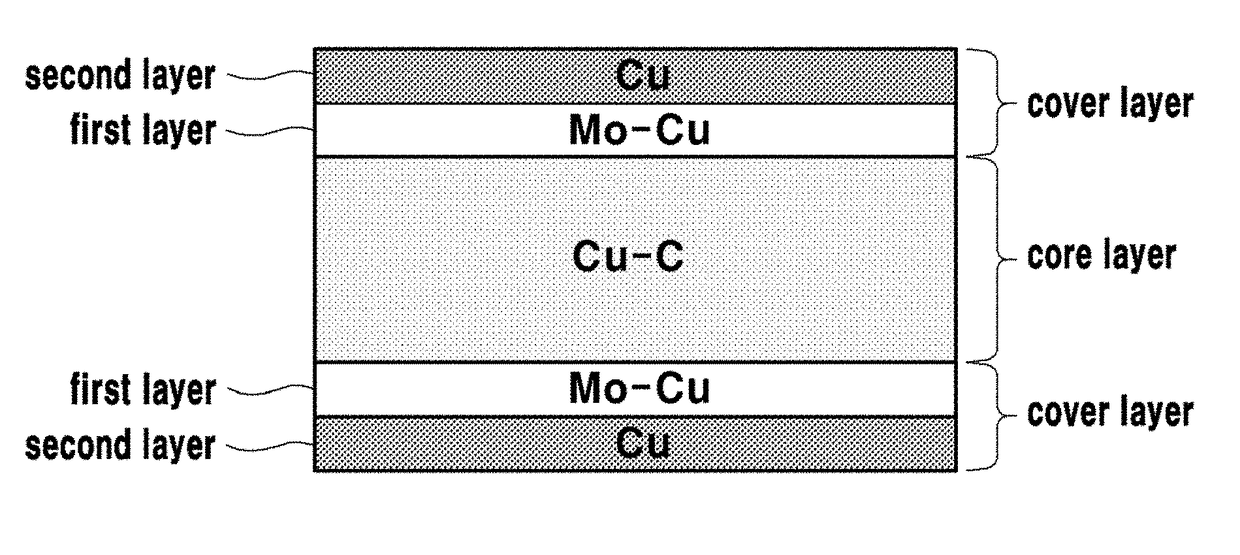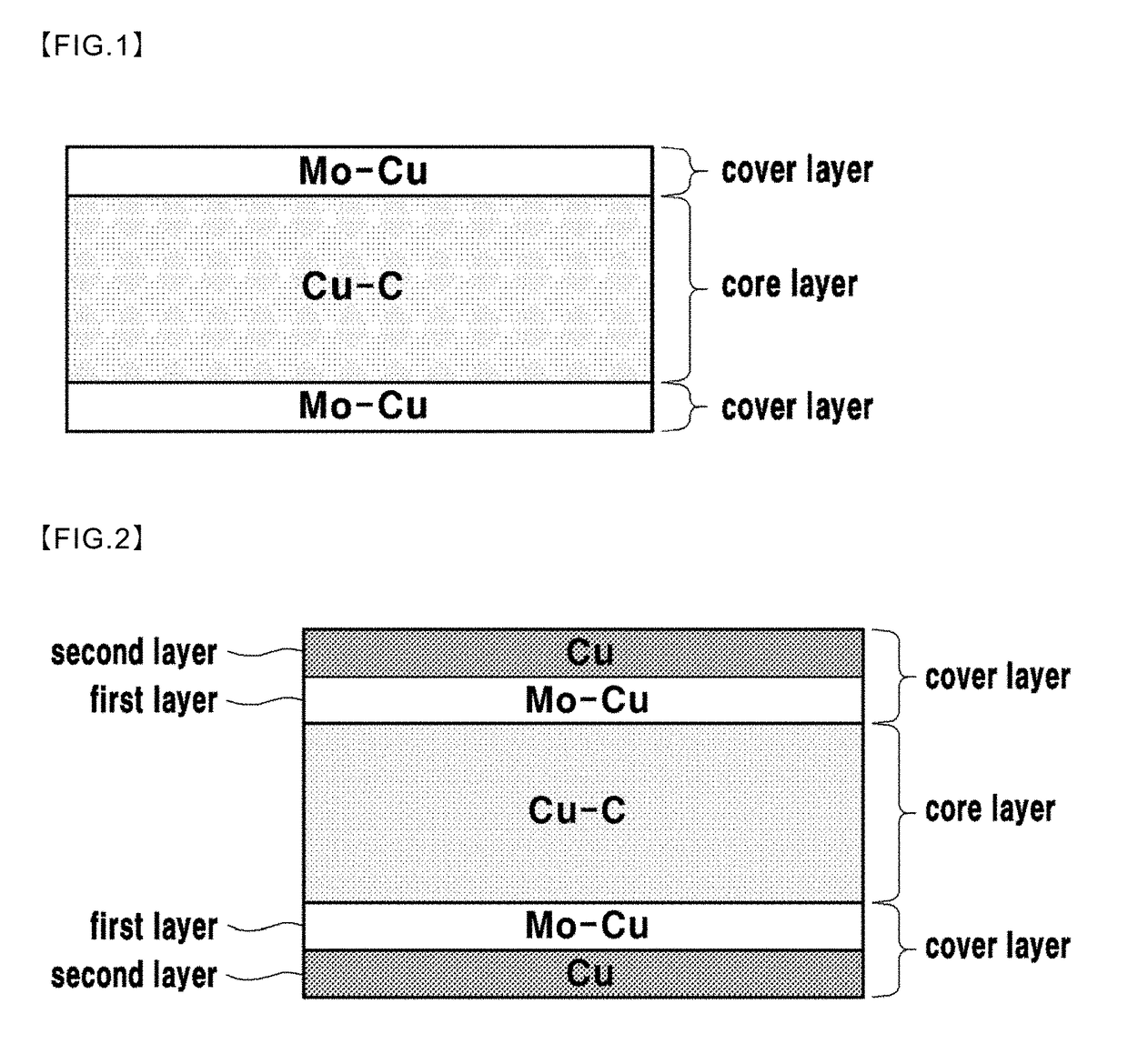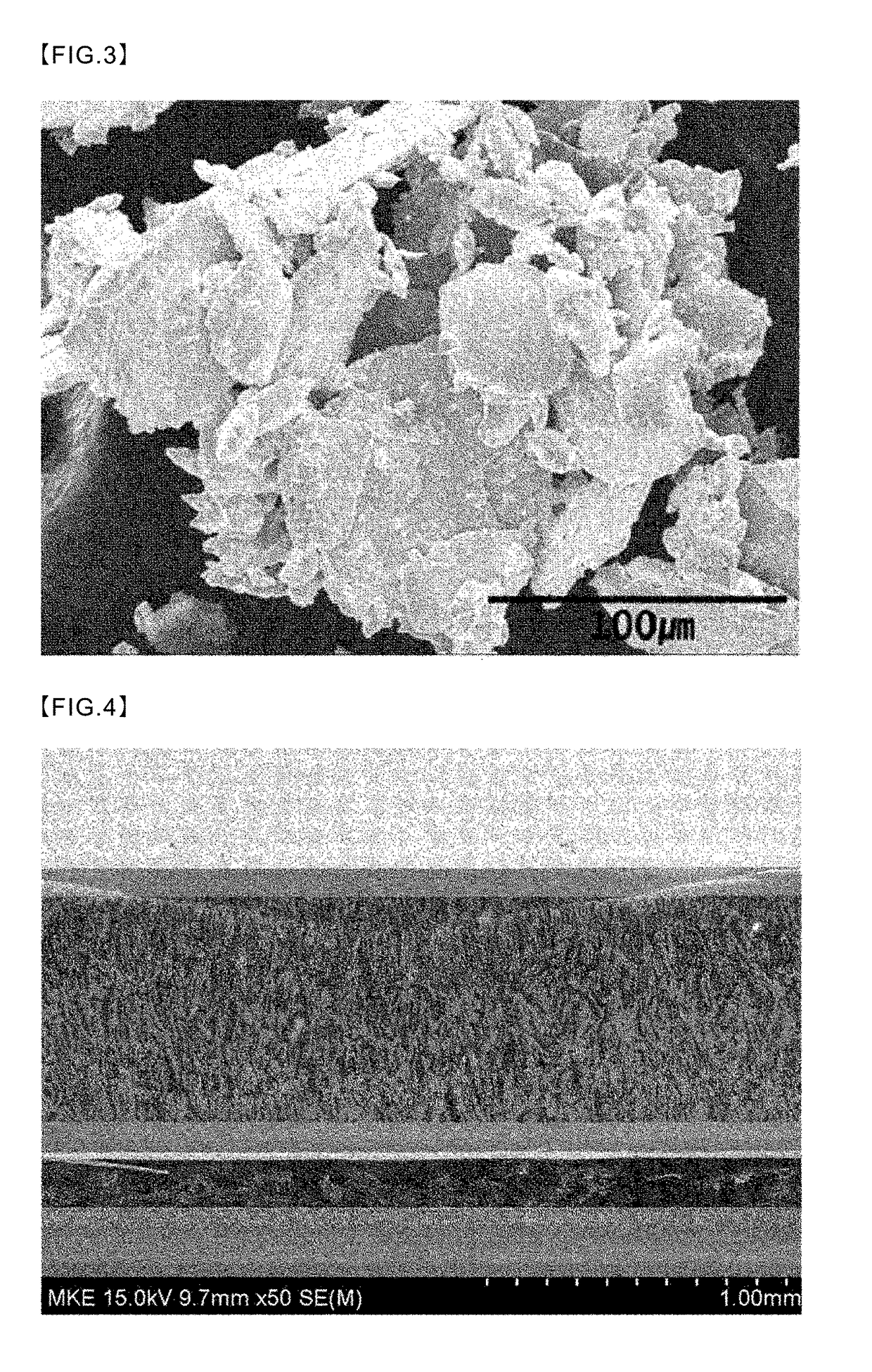Heat-dissipating plate for high-power element
a technology of heat dissipation plate and high-power element, which is applied in the direction of cooling/ventilation/heating modification, lighting and heating apparatus, and modification by conduction heat transfer, etc. it can solve the problems of low thermal expansion coefficient, defects in the elements, and difficulty in application of composite materials such as several-hundred watt-level transistors. , to achieve the effect of high thermal conductivity and low thermal expansion coefficien
- Summary
- Abstract
- Description
- Claims
- Application Information
AI Technical Summary
Benefits of technology
Problems solved by technology
Method used
Image
Examples
example 2
[0055]A plate-shaped first layer, in which a 100-150 μm thick Cu plate is stacked, was formed in a mold.
[0056]Also, a plate-shaped second layer, in which a 50-100 μm thick Mo—Cu (64 wt % Mo-36 wt % Cu) is stacked, was formed on the first layer.
[0057]Also, in forming the third layer composed of Cu and a graphite phase, the third layer was formed by using a plate shape in which a Cu-plated graphite powder was manufactured by the same method as in Example 1 of the invention.
[0058]Also, a plate-shaped fourth layer, in which a 50-100 μm thick Mo—Cu (64 wt % Mo-36 wt % Cu) is stacked, was formed on the third layer.
[0059]Also, a plate-shaped fifth layer, in which a 100-150 μm thick Cu plate is stacked, was formed on the fourth layer.
[0060]In Example 2 of the present invention, Mo—Cu plates or Cu plates were used by being laminated, but the first layer, second layer, fourth layer, and fifth layer may also be formed by compression molding Mo—Cu or Cu powder.
[0061]By repeating the lamination ...
example 3
[0064]Processes other than the sintering process were performed identically to Example 2 of the present invention, and a metal-based composite plate was obtained by performing a sintering process of the core material at a sintering temperature of 900° C., an applied pressure of 80 MPa, and a sintering time of 20 minutes.
example 4
[0065]Processes other than the sintering process were performed identically to Example 2 of the present invention, and a metal-based composite plate was obtained by performing a sintering process of the core material at a sintering temperature of 850° C., an applied pressure of 80 MPa, and a sintering time of 20 minutes.
[0066]FIG. 4 is a scanning electron micrograph of a thickness direction cross section of a heat-dissipating plate manufactured according to Example 1 of the present invention.
[0067]As illustrated in FIG. 4, a cover layer (the light grey part of the figure) absent a graphite particle phase and composed of a Mo—Cu alloy is formed to a depth of about 100 μm from the surface of the top face and bottom face of a heat-dissipating plate manufactured according to Example 1 of the present invention, and in the middle, a composite phase in which graphite particles are distributed in a Cu matrix is formed to a thickness of about 1 mm. Moreover, FIG. 5 is an image of a Cu-graphi...
PUM
| Property | Measurement | Unit |
|---|---|---|
| thickness | aaaaa | aaaaa |
| thickness | aaaaa | aaaaa |
| temperatures | aaaaa | aaaaa |
Abstract
Description
Claims
Application Information
 Login to View More
Login to View More - R&D
- Intellectual Property
- Life Sciences
- Materials
- Tech Scout
- Unparalleled Data Quality
- Higher Quality Content
- 60% Fewer Hallucinations
Browse by: Latest US Patents, China's latest patents, Technical Efficacy Thesaurus, Application Domain, Technology Topic, Popular Technical Reports.
© 2025 PatSnap. All rights reserved.Legal|Privacy policy|Modern Slavery Act Transparency Statement|Sitemap|About US| Contact US: help@patsnap.com



